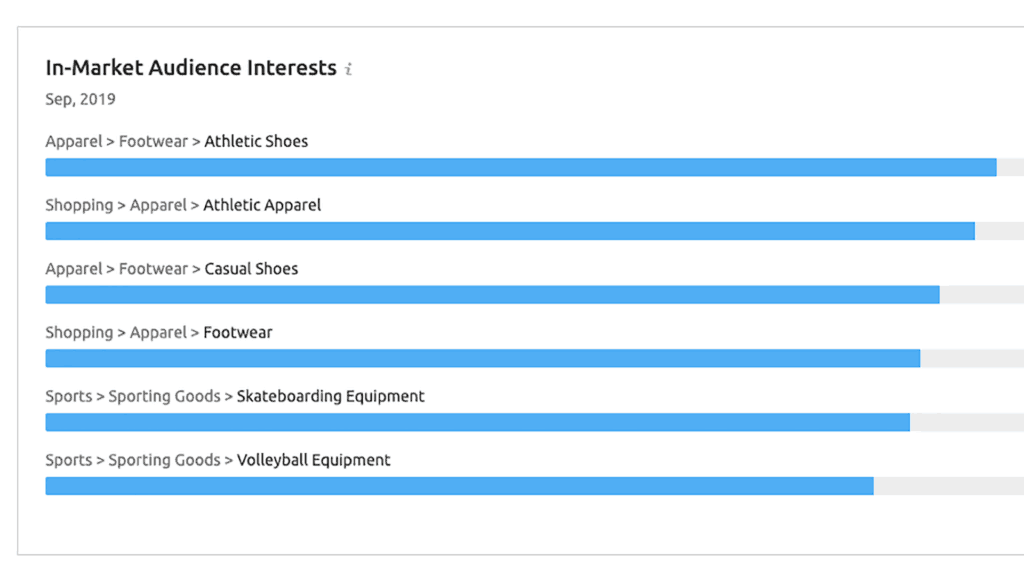Search engine marketing tool SEMrush analyzes 2 Billion events every day.
But is it really worth the hype?
Whether you’re an SEO Manager or a business owner searching for ways to integrate search into your strategies without needing a dedicated team, you’ve heard of the product. But the challenge can be assessed if it’s the right tool for you.
Here’s our SEMrush review for 2020.
Page Contents
SEMrush Explained

SEMrush is a search engine marketing tool geared to provide insightful data and reporting. The product was made 11 years ago by a small team of search engine optimization and IT experts. Its original focus was SEO, and pulling metrics and displaying them in a valuable way. But the tool has grown to offer even more search features, along with paid search, social media, and content marketing.
SEMrush Review of Changes for 2020
Along with new sister products Oppty and Sellery, many features and tools in SEMrush got upgrades in 2020. Here are some of the updates made for 2020.
- The Position Tracking Mobile App allows you to track campaigns in real-time anywhere
- Extended the availability of the List Management tool in Australia and the United Kingdom
- Integration with Google Data Studio for more in-depth and customizable reporting
- Organic research now searches subfolders too
- A handful of crawling enhancements made to the site audit tool, including being able to crawl pages blocked by crawlers
- More features added to the Market Explorer tool
- Bulk analysis, viewing of mobile and desktop traffic with the Traffic Analytics tool
- The Content Marketplace allows you to find writers, assign projects, have copy written and pay writers all in the SEMrush platform
- Brand monitoring and tracking brand mentions
- SEO writing assistant
- Improved Marketing Calendar to display more detailed information about campaign status and time management
- More intelligent audience targeting
- The AdSense Benchmark Tool that forecasts earnings
- Improved Advertising Research tool
- Instagram added to the social media scheduling tool
- Boosting social media posts automation
- LinkedIn business page manager
- Improved speed of SEMrush Analytical API
- My Reports Competitor Analysis template
As you can see, the platform made a lot of significant changes in 2020. Now we’ll deep dive into a few of the key features of SEMrush for 2020.
Keyword Difficulty Tool
It seems like every business wants to rank for the most impressive keywords and why wouldn’t they? But what many fail to realize is that the “big ones” are usually so competitive that they aren’t really worth chasing after. Communicating this to stakeholders is a struggle for SEO teams.
SEMrush offers a feature that makes this a little easier but making placing a “difficulty” value on keywords through its Keyword Difficulty too. The keyword tool lists the usual suspects like search volume and display results along with a percentage that estimates how difficult it would be to beat out competitors for ranking. This feature makes it very easy to communicate the idea of “competitiveness” to anyone in a company without having to get too technical.
Domain vs. Domain Tool

SEMrush makes it incredibly easy to see which keywords competitor websites are ranking for. Users can compare up to five different URLs to review the organic, paid and product listing ads (PLA) keywords of a website. Within seconds users can clearly see the basic stats for a site’s top-ranking keywords like search volume, difficulty, cost-per-click (CPC), competitive density, search results, and keyword search trends.
You can also check to see where a website ranks for a particular keyword in SERPs. This feature makes credible, in-depth competitive analysis within minutes. The data is also displayed in a chart that’s easy for anyone to understand. This tool is incredibly helpful for choosing keywords for an organic keyword strategy or choosing keywords for a pay-per-click campaign.
Chart Tool
SEMrush’s chart tools might be some of the “prettiest” around. Charts displays key website visibility indicators like “Main Organic Competitors,” “Top Organic Keywords” and “Organic Search Traffic.”
The chart tool can be used for your website, or to dive deeper into competitors. It clearly shows which sites are your top competitors, the keywords your ranking for and your backlinks. It will also flag any backlinks hurting your rankings.
Report Builder Tool

SEMrush allows you to develop “customized” reports that only highlight the data you want to highlight. You can choose from templates like “Google My Business Insights” or “Organic Search Positions.” These templates are organized in blocks, that can be removed, or added to as needed.
These reports are focused on limiting the amount of time you need to spend on building reports and making data easy to communicate.
Keyword Magic Tool
Who wants to do research, when you can have magic? That’s the aim of the “Keyword Magic” tool. It’s designed to take the complexity out of keyword search making it a process that can take only minutes to effectively do.
You can save your search, import your own keywords and integrate the results easily with other tools on the site. The tool can show “broad match” results, which honestly are hit or miss. It also offers “phrase match,” “exact match” and “related” search options, which are all better.
You can also choose to filter keyword results by excluding or including specific words, or filtering results so that they are only in a question format.
Traffic Sources and Analysis

Simply reporting on the total amount of traffic to a landing page or generated by a specific keyword isn’t enough anymore. You need to understand the sources of the traffic you’re generating to really analyze what’s working and to build successful strategies.
SEMrush has taken a lot of time to develop its traffic analysis features for analyzing your website, and the website of your competitors. Users can track traffic volume, specific sources, desktop, and mobile traffic. You can also identify the top pages, destination sites, subdomains, audiences, and geo-locations.
SEMrush has also made it very easy to not only view the backlinks of your site an the sites of competitors but you can also easily analyze the quality of the backlinks. This is very important for teams who want to tighten-up their SEO strategy and improve their brand’s awareness and authority. The tool also flags questionable backlinks with a nofollow note.
Social Media Toolkit
I’m excited to see how SEMrush’s social media tools evolve over time. Like Hootsuite and other social media platforms, SEMrush has a social media scheduling feature. Their tool is compatible with social media networks like Instagram, Facebook, Twitter, LinkedIn, Pinterest, and Google My Business. But, the tool cannot automatically publish onto Instagram, it will alert the user via email when to post a scheduled post.
Their social media platform also provides some solid audience growth insights, competitor tracking, and in-platform boosting. You can also shape campaigns around data gathered from the app like choosing when to post and who to target in campaigns.
Market and Audience Research

So often businesses assume who their audience is, verses actually knowing who their audience is. It’s easy to get hung up on who you want to be your customer to be, especially if who they actually are isn’t what you expect. But figuring this out is essential to your marketing plan.
Understanding your true audience will make or break whatever strategies you implement today or six months from now. And the only way to really know who your audience is is through data. It’s one thing for a tool to provide data, and another be able to analyze and use it.
SEMrush has made strides with its Market Explorer, which allows you to target your search by niche, competitors or by taking a broader view. It also allows you to monetize your audience by taking that audience data and discovering paid search and advertising opportunities.
Advertising Capabilities
In an effort to make its platform more integrated, SEMrush has made a huge effort to improve the effectiveness and capabilities of their platform’s advertising capabilities. From display advertising to PPC and Product Listing Ads, SEMrush wants to be your one-stop-shop for digital ads.
For example, the CPC Map displays keyword trends and average costs-per-click by country and state. The Advertising Research tool is made to help teams make more informed campaign decisions, by assessing the seasonality and current trends by niche and location of keywords. You can build ads, monitor, and optimize all your digital campaigns in one place.
Content Marketing

Some of the platform’s biggest additions for 2020 were in the content marketing section of the platform. From creating topics to write about to hiring freelancers, editing, analyzing the success of the content and developing strategies, there’s a lot of potential with the content marketing capabilities of SEMrush.
We say potential because while the platform is impressive in theory, it’s still got some kinks to work out. For example, the topic creation tool is not very impressive and doesn’t provide anything more unique than a Google search about a topic that might pull up.
For teams who are new to content marketing, the ability to plan, and have content templates in one place is helpful. Some tools allow you to optimize content, track its impact and even improve its searchability, which is a nice feature for content repurposing projects. It’s ability to access the value of content and help businesses find ways to make money blogging is an added bonus.
The SEO Assitant is built to help be a built-in SEO Editor that helps with elements of writing like voice, while also analyzing and optimizing content to be SEO friendly. Unfortunately, a lot of these features are only available on the paid versions of SEMrush.
Pros of SEMrush

You don’t need a lot of SEM knowledge to use SEMrush and build effective campaigns. I don’t recommend trying to create a comprehensive, keyword-based digital marketing strategy without experience, but this tool makes it doable for really anyone. There aren’t many free tools that provide the ability to analyze competitors as nicely as SEMrush does.
This tool is incredibly easy to navigate and use. Anyone at any level can easily log in, decipher information and pull reports. It also greatly cuts the amount of time an individual or team needs to spend on research, tracking and reporting.
As we mentioned before, one of the biggest struggles for SEO teams is often communicating the value and purpose of specific strategies. The reporting and chart features of SEMrush help build a bridge between the SEO world and the rest of an organization.
The upgrades to SEMrush are also pretty impressive. Although it’s not cheap, it’s relatively affordable when you consider all of the platforms other capabilities like paid ad management, social media scheduling, content marketing and more. It’s really trying to position itself as an all-encompassing digital marketing platform.
Cons of SEMrush

One of the biggest cons of SEMrush is the inability to do in-depth research, reporting, and competitive analysis without paying for the software. With a free account, it allows you to make 10 free requests (which basically search inquiries) every day. For most teams, this isn’t enough for a comprehensive report.
You also can not pull historical data without a paid account. For example, with the charts tool, you can only view the metrics for the current day. If you wanted to collect data from over a specific time range, you would need to use a paid plan. Which is what most people tracking campaigns need.
You also cannot save searches using the Keyword Magic tool, have a limited amount of projects, pages to crawls, PDF reports, topics searches and keywords to track. The biggest “con” would be that the tool is relatively surface level when it comes to really “getting in there.”
Is SEMrush Right for You?
SEMrush is a great option for marketers who want to better integrate their digital marketing efforts into more of a holistic approach. The paid versions are great for both small and large teams.
SEMrush can make up for the lack of manpower a team of one or only a few might face. It allows you to up your digital marketing strategy without having to spend a lot (when compared to hiring an agency or more team members). Larger marketing teams that have the manpower to do more, can make better use of their time and will appreciate the additional tools and features.
But, “true” SEOers or IT specialists might find the platform to be somewhat restrictive. They might actually prefer to dive into Google Analytics and create reports in their own way, instead of using the templates offered.
Like this SEMrush review? Need help scaling your business? Let me help you harness the powers of SEM! Learn more on our website

